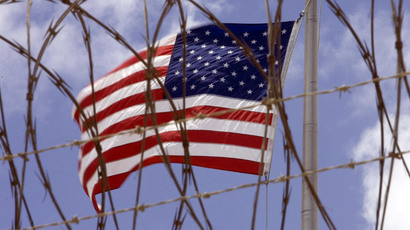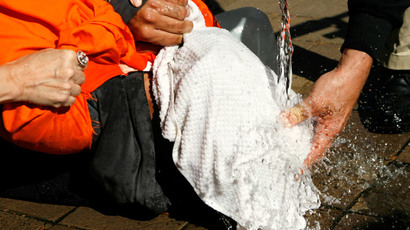10 most shocking facts we found in CIA torture report
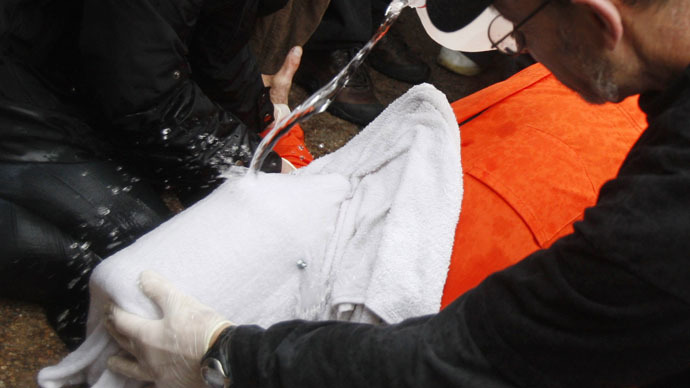
The so-called “torture report” released by the Senate this week contains only a fraction of the findings on how the CIA aimed to gather intelligence from detainees through interrogation. Still, it contains more than a few shocking revelations.
READ MORE: Not-so-magnificent 7: Nations named & shamed in CIA torture report
According to the Senate committee’s findings released on Tuesday, the “enhanced interrogation techniques,” or EITs, used against foreign prisoners within the walls of covert, overseas prisons ultimately prove to be largely ineffective. John Brennan, the current director of the CIA, challenged those claims with a lengthy rebuttal on Thursday.
Nevertheless, the executive summary made public this week after four years of research (and at a cost of some $40 million) continues to raise serious questions about the CIA’s use of torture in the wake of the September 11 terrorist attacks. Now, as the CIA, Senate, and seemingly everyone in Washington, DC debates the committee’s findings, below is but a mere sampling of some of the more shocking details described within the document.
Frozen to death
Gul Rahman, an alleged Afghan militant, was arrested six weeks after the 9/11 attacks and brought to a CIA-run prison north of Kabul, known as the Salt Pit (or COBALT, in this week’s report). Rahman’s stay wasn’t a long one, however, on account of him dying less than a month later, from what the Senate committee suspects to have been hypothermia.
Sometime that November, a low-level CIA officer at COBALT ordered that Rahman be stripped naked, except for a sweatshirt, and “shackled to the wall of his cell in a position that required the detainee to rest on the bare concrete floor,” according to the Senate committee. So soon after 9/11, though, CIA headquarters had yet to approve any interrogation tactics whatsoever at that time. Rahman’s name was kept secret for seven years after he died, and the bulk of what the world knows about his passing was largely unknown until this week. The junior officer who insisted Rahman spend the night naked on a cold, concrete floor, meanwhile, was recommended to receive a "cash award" of $2,500 for his "consistently superior work” just four months later, the Senate report acknowledges.
Rectal feeding
At least five CIA detainees were subjected to "rectal rehydration," or rectal feeding, the Senate report reads, in order to keep prisoners alive who allegedly otherwise refused to eat. Yet according to the committee’s findings, investigators failed to discover any “documented medical necessity” for doing as much. What the Senate did discover, however, is that the CIA’s chief of interrogations at the COBALT facility characterized the tactic as being among the methods used to exhibit the agents’ “total control” over detainees; another officer described the technique as being helpful to “clear a person's head,” and CIA medical staff even called it a means of behavioral control, according to the report.

According to another excerpt, Saudi detainee Abd al-Rahim al-Nashiri was placed "in a forward-facing position (Trendlenberg) with head lower than torso,” then rectally “fed.” Another prison, the report reveals, was given a “lunch tray” of hummus, pasta with sauce, nuts, and raisins, which was “pureed” and anally infused.
“[W]hat I infer is that you get a tube up as far as you can, then open the IV wide. No need to squeeze the bag — let gravity do the work,” one officer wrote of the process.
When the CIA responded to the Senate panel’s inquiries about the practice ahead of the report’s publication, the agency called rectal rehydration a "well acknowledged medical technique.” At least one detainee, however, was subsequently diagnosed with chronic hemorrhoids, an anal fissure, and symptomatic rectal prolapse after being rectally fed. The CIA also said that doing as much to a detainee was necessary in instances where prisoners became uncooperative, but the Senate panel found that records suggested such was done to inmates regardless of whether they were willing to cooperate.
Insects
While not exactly a revelation — reports concerning the CIA’s use of insects on detainees as a means of torture were unearthed half a decade ago — the executive summary released touches on how interrogators sought to exploit one detainee’s severe entomophobia, or fear of insects, in order to elicit information. According to the Senate panel’s findings, the Department of Justice’s Office of Legal Counsel (DOJ OLC) issued a memorandum in August 2002 advising that placing Abu Zubaydah, a suspected Saudi militant, in a “confinement box” with insects “would not violate prohibitions against torture.” That method of interrogation was proposed one month earlier by a contractor, codenamed SWIGERT in the report, who had derived it from a United States military manual but personally lacked any real-world experience with interrogations prior to orchestrating the torture program.
Details about the CIA’s desire to use insects on detainees first surfaced in 2009, when a declassified DOJ memo revealed that the agency wanted to place Zubaydah in a small confinement box with a bug because “he appear[ed] to have a fear of insects.” Interrogators would then tell Zubaydah that the insect’s sting "would produce death or severe pain." Ultimately, however, a 2005 memo noted that the technique was removed from the list of authorized interrogation tactics.
As for Zubaydah, today he remains imprisoned 12 years later at the Guantanamo Bay detention center, despite having never been charged with a crime.
Sleep deprivation
Russian scientists experimented with sleep deprivation as far back as the nineteenth century, and American prisoners caught during the Korean War were subjected to the practice more than 60 years ago. Yet while the extent of how the CIA used the technique to try and gain intelligence from suspected terrorists has been well documented in the past, this week’s report contains examples of particular, previously unpublished incidents in which detainees were deprived of sleep for upwards of five straight days.
“Sleep deprivation involved keeping detainees awake for up to 180 hours, usually standing or in stress positions, at times with their hands shackled above their heads,” the Senate report reads in part. “At least five detainees experienced disturbing hallucinations during prolonged sleep deprivation and, in at least two of those cases, the CIA nonetheless continued the sleep deprivation.”
In one instance, the CIA subjected a detainee, Abu Hudhaifa, to “ice water baths and 66 hours of standing sleep deprivation,” then released him because it was realized that, according to the report, “he was likely not the person he was believed to be.” Another inmate, Arsala Khan, reportedly suffered from “disturbing hallucinations” after being kept awake for 56 hours, at which point the CIA determined that he did not appear to be “involved in...current plans or activities against US personnel or facilities.”
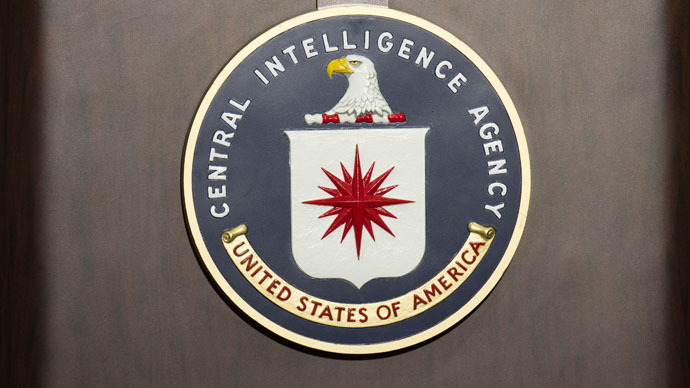
According to the Senate report, alleged 9/11 mastermind Khalid Sheikh Mohammed once endured a period of sleep deprivation, most of it in the standing position, for seven and a half days, or approximately 180 hours, in 2003.
Although CIA headquarters did approve the use of sleep deprivation on detainees while the so-called “black sites” were in operation, the report found that often prisoners were forced to stay awake for days past the officially allowable amount. When the White House weighed in about torture tactics in July 2003, according to the report, the CIA began considering sleep deprivation beyond 72 hours as an “EIT,” and not a “standard” interrogation technique.
“To avoid using an ‘enhanced’ interrogation technique, CIA officers subjected Khallad bin Attash to 70 hours of standing sleep deprivation, two hours less than the maximum,” the Senate panel found. “After allowing him four hours of sleep, bin Attash was subjected to an additional 23 hours of standing sleep deprivation, followed immediately by 20 hours of seated sleep deprivation.” Another inmate was kept awake for 46.5 hours, 24 hours and 48 hours, “with a combined three hours of sleep between sessions,” according to the report. Yet another, Abu Ja’far Al-Iraqi, was kept awake for 102 hours at one point.
Threats to Family
At times, CIA officers evoked the families of detainees in order to try and break them down during interrogations, according to the report. Al-Nashiri, whose rectal feeding is described above, was told “[w]e could get your mother in here” and “[w]e can bring your family in here,” CIA records reveal; according to the report, CIA officers implied during one interrogation that Al-Nashiri’s mother would be brought to the same prison and raped in front of him. KSM, the alleged 9/11 mastermind, was told the CIA was going to kill his children if any terror plots occurred in the US while he was in custody.
At least three detainees were threatened with harm to their families, the Senate Intelligence Committee found, “to include threats to harm the children of a detainee, threats to sexually abuse the mother of a detainee and a threat to ‘cut [a detainee's] mother's throat.’" With respect to KSM, detention site personnel hung a picture of his sons in his cell as a way to "[heighten] his imagination concerning where they are, who has them, [and] what is in store for them,” CIA officials said.
Prolonged Standing
As noted above, often detainees forced to endure long bouts of sleep deprivation were forced to stay awake by being tethered to walls with their arms shackled above their heads. Such a pose was used often against detainees even when prohibiting prisoners of sleep wasn’t the aim, however, and many victims exhibited injuries, according to the report, while being forced to stand for sometimes days on end.
Throughout much of 2003, the committee found, “CIA officers (including personnel not trained in interrogation) could, at their discretion, strip a detainee naked, shackle him in the standing position for up to 72 hours and douse the detainee repeatedly with cold water — without approval from CIA headquarters.” In one instance cited in the report, a CIA official said of a detainee, "'as far as we could determine,' had been chained to the wall in a standing position for 17 days.”
Another detainee, Basliir Nasri Ali al-Marwalah, told jailers at Guantanamo Bay upon his arrival there from a CIA black site that he had been “tortured” by agents at COBALT who forced him to stand naked for five days straight once. On occasion, detainees long-subjected to standing would be relieved when their injuries, often edema, became significant enough. In the case of Abu Hazim and Abd al-Karim, CIA documents reveal the detainees would be "seated, secured to a cell wall, with intermittent disruptions of normal sleeping patterns” when they could no longer stand. Another, Abu Ja'far al-Iraqi, “experienced swelling in his lower legs requiring blood thinner and ace bandages,” according to report, after being forced to stand for 54 hours. “After the swelling subsided, he was provided with more blood thinner and was returned to the standing position,” the Senate found.
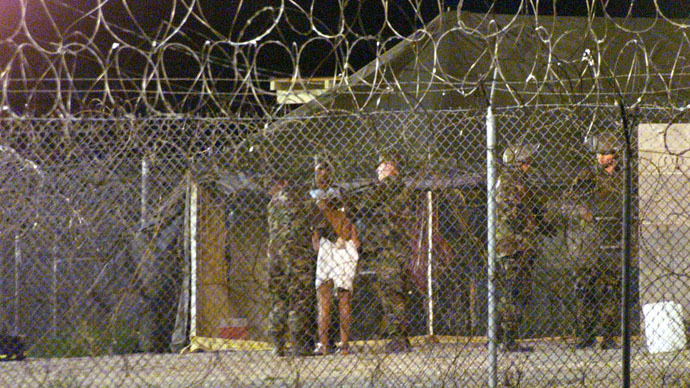
No Accountability
The Senate committee’s report and subsequent remarks made this week by lawmakers have indicated that no CIA officials have ever been reprimanded or held accountable whatsoever for interrogating detainees with torturous tactics.
“CIA officers and CIA contractors who were found to have violated CIA policies or performed poorly were rarely held accountable or removed from positions of responsibility,” a portion of the report reads. “CIA managers who were aware of failings and shortcomings in the program but did not intervene, or who failed to provide proper leadership and management, were also not held to account,” reads another excerpt and, on two occasions, “accountability recommendations were overruled by senior CIA leadership,” including the instance in which Gul Rahman froze to death on the cold concrete COBALT prison floor.
“As detailed in the study, there was no accountability for personnel responsible for the extended detention of individuals determined by the CIA to have been wrongly detained,” reads another portion.
To this day, the only CIA official who participated in the torture program believed to have been punished is John Kirakou, a former employee currently serving prison time after going public in 2007 about the interrogation tactics.
“In truth, this is my punishment for blowing the whistle on the CIA’s illegal torture program and for telling the public that torture was official US government policy,” Kiriakou said in a letter last May sent from a Pennsylvania prison.
Meanwhile, this week’s Senate report revealed that the two
psychologists who developed the torture program on behalf of the
CIA have since made more than $81 million for their contributions
and to this day remain eligible for government-paid legal counsel
should they ever been called into court for their role.
George W. Bush, the American president who held office during the
torture program, defended the interrogations ahead of the
report’s release this week, calling the CIA officials connected
to it “patriots.” His vice president, Dick Cheney, has
since called the report “full of crap,” a “terrible
piece of work” and “deeply flawed.”
“I think what needed to be done was done," Cheney told CNN on Wednesday this week. "I think we were perfectly justified in doing it. And I'd do it again in a minute."
“I certainly agree that there were times when CIA officers exceeded the policy guidance that was given and the authorized techniques that were approved and determined to be lawful,” CIA Director Brennan said Wednesday this week; he too acknowledged that no employees have ever been reprimanded.
Truths of Waterboarding
It’s no secret that the CIA employed the simulated-drowning tactic known as waterboarding to try and get information out of suspected terrorists detained overseas. With the release of this week’s report, however, details are emerging about lengthy interrogation sessions in which prisoners were subjected to “the water board,” as agents often called it, well beyond what was officially allowed.
“The waterboarding technique was physically harmful, inducing convulsions and vomiting,” the Senate panel found. In the case of Abu Zubaydah, for instance, the terror suspect became "completely unresponsive, with bubbles rising through his open, full mouth” when interrogators tried to give the inmate the impression that he was drowning to death. Interrogators then relied on medical officials to revive the man, at which point he expelled “copious amounts of liquid.” Despite nearly killing the man, the Senate probe found that the event “was referenced in emails, but was not documented or otherwise noted in CIA cables.”
Zubaydah, who today resides at Gitmo, was waterboarded two-to-four times a day, the Senate found, which often "resulted in immediate fluid intake and involuntary leg, chest and arm spasms" and "hysterical pleas.”
In 2003, a CIA email uncovered by the Senate revealed exactly how prison officials at the “DETENTION SITE BLUE” facility planned to use the water board extensively on KSM the day he arrived at the secret jail:
"[T]he team here apparently looks to use the water board in two different contexts. One is as a tool of regression and control in which it is used up front and aggressively. The second is to vet information on an as needed basis. Given the various pressures from home vs what is happening on the ground, I think the team's expectation is that [KSM] will [be] getting treatment somewhere in between. I don't think they believe that it will be possible to entirely avoid the water board given the high and immediate threat to US and allied interests. It is an interesting dynamic because they are well aware of the toll it will take on the team vs. the detainee. The requirements coming from home are really unbelievable in terms of breadth and detail.”

According to the committee’s report, KSM arrived at COBALT sometime in March 2003 and, by the last week of the month, had been waterboarded 183 times. Meanwhile, the report reads, guidelines circulated among medical personnel at the detention site said the tactic should be used only 20 times a week.
“On March 10, 2003, KSM was subjected to the first of his 15 separate waterboarding sessions. The first waterboarding session, which lasted 30 minutes (10 more than anticipated in the Office of Legal Counsel's August 1, 2002, opinion), was followed by the use of a horizontal stress position that had not previously been approved by CIA headquarters. The chief of Base, worried about the legal implications, prohibited the on-site medical officer from reporting on the interrogation directly to OMS [CIA's Office of Medical Services] outside of official CIA cable,” reads part of the report.
“Prior to the third waterboard session of that calendar day, the onsite medical officer raised concerns that the waterboard session—which would be the fourth in 14 hours—would exceed the limits included in draft guidelines that had been distributed the previous afternoon,” which said up to three session in a 24-hour span was acceptable. By then, though, KSM had already been waterboarded more than 65 times over the course of four sessions in a single day.
“During the waterboarding sessions that day, the application of the interrogation technique further evolved, with the interrogators now using their hands to maintain a one-inch deep ‘pool’ of water over KSM's nose and mouth in an effort to make it impossible for KSM to ingest all the water being poured,” the panel found.
Mistaken Identities and Lost Detainees
According to the information contained in this week’s report, the CIA either lost detainees or outright lied about who was being held at black sites during the Bush administration. Although the CIA said in both public and classified settings that “fewer than one hundred” prisoners were held at those facilities, the Senate committee found that, in actuality, at least 119 individuals were detained by the intelligence agency.
“Internal CIA documents indicate that inadequate record keeping made it impossible for the CIA to determine how many individuals it had detained,” the report reads.
In one instance cited in the executive summary, a 2003 CIA document found the agency was "holding a number of detainees about whom" it knew "very little.”
During the span that those sites were in operation, the Senate committee found that 26 of the 119 detainees — 22 percent — were held by the CIA despite not meeting the standards for detention. Additionally, at least four instances occurred where individuals did not meet the standards for detention relied on by US officials, so prisoners were instead confined at facilities in foreign nations at the behest of the CIA.
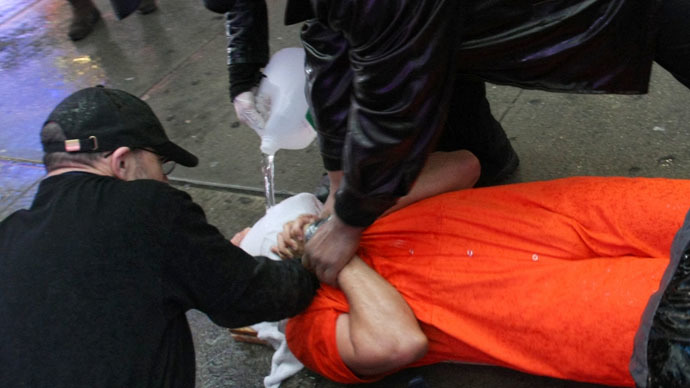
Misleading the White House
“The CIA represented to the White House, the National Security Council, the Department ofJustice, the CIA Office of Inspector General, the Congress and the public that the best measure of effectiveness of the CIA's enhanced interrogation techniques was examples of specific terrorist plots ‘thwarted’ and specific terrorists captured as a result of the use of the techniques,” reads a portion of the Senate report. Nevertheless, the committee’s probe determined that such claims were inaccurate, and that the CIA lied about the effectiveness of the torture tactics for years.
“The suggestion that all CIA detainees provided information that resulted in intelligence reporting is not supported by CIA records,” the committee found, going as far later in the report to call the CIA’s representations concerning the effectiveness of interrogations “inaccurate and unsupported by CIA records.”
Responding to the report this week, Director Brennan said he admits that it’s “unknowable” whether the use of enhanced interrogation techniques, or EITs, solely elicited information from detainees, adding, “But for someone to say that there was no intelligence of value, of use, that came from those detainees once they were subjected to EITs, I think that…lacks any foundation at all.”
There’s “no evidence that terror attacks were stopped, terrorists captured or lives saved through use of EITs,” Sen. Dianne Feinstein (D-California), the chair of the committee that conducted the four-year investigation into the torture program, tweeted in response.













